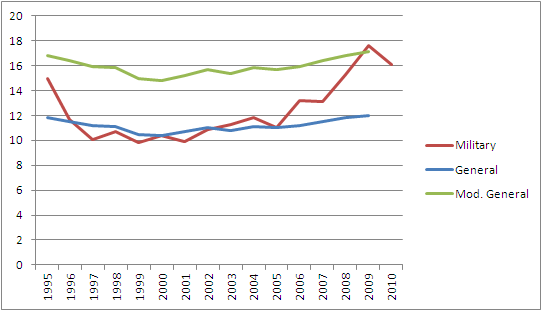Military suicides are in the news again. This year, we have seen an average of one active-duty suicide per day, which is more than the number of combat fatalities in the same period. All suicides are tragic, and clearly the number of military suicides is up from previous years. However, that does not mean that members of the armed forces are committing suicide at a higher rate than similarly-situated civilians.
In the discussion of military suicides, commentators regularly make very sloppy comparisons between the military suicide rate and the general suicide rate. The problem with these comparisons is that the demographics of the armed forces do not reflect those of the general population. Most notably, the armed forces are around 86 percent male, while the population in general is around 50 percent male. And that makes a huge difference.
Males commit suicide at a rate nearly four times that of females. A population like the military with a much higher percentage of males should have a significantly higher overall suicide rate, all else equal. Thus, a comparison of military and general suicide rates does not really tell us anything meaningful. If we want a more meaningful comparison of civilian and military suicide rates, we need to apply demographic controls to the data.
There are numerous ways to do so. In the below graph, I use Census and Center for Disease Control data to plot the yearly number of suicides per 100,000 people. The red line is the suicide rate for the military, and the blue line is the suicide rate for the general population. For the green line, I roughly calculated what the suicide rate for the general population would have been if it had the same ratio of men and women as the military does.

Just that single control makes a huge difference. We can see that generally speaking, the military has a much lower suicide rate than the general population. The gradual increase in the military suicide rate over the last decade has only brought the rate up to the level where the general population is already at. Although I do not do it here, a rigorous comparison would also include controls for age, race, and socioeconomic background as well.
I write this not to make any particular point about military suicides. Since the US invaded Afghanistan and Iraq, military suicides have clearly been on the rise, and that is something to be concerned about. My point here is simply that demographic controls are really important and often neglected in the superficial analysis you get in the popular press. In this case, some commentators have used faulty suicide rate comparisons to show that the military has a bigger suicide problem than the general population. And that is just not true.